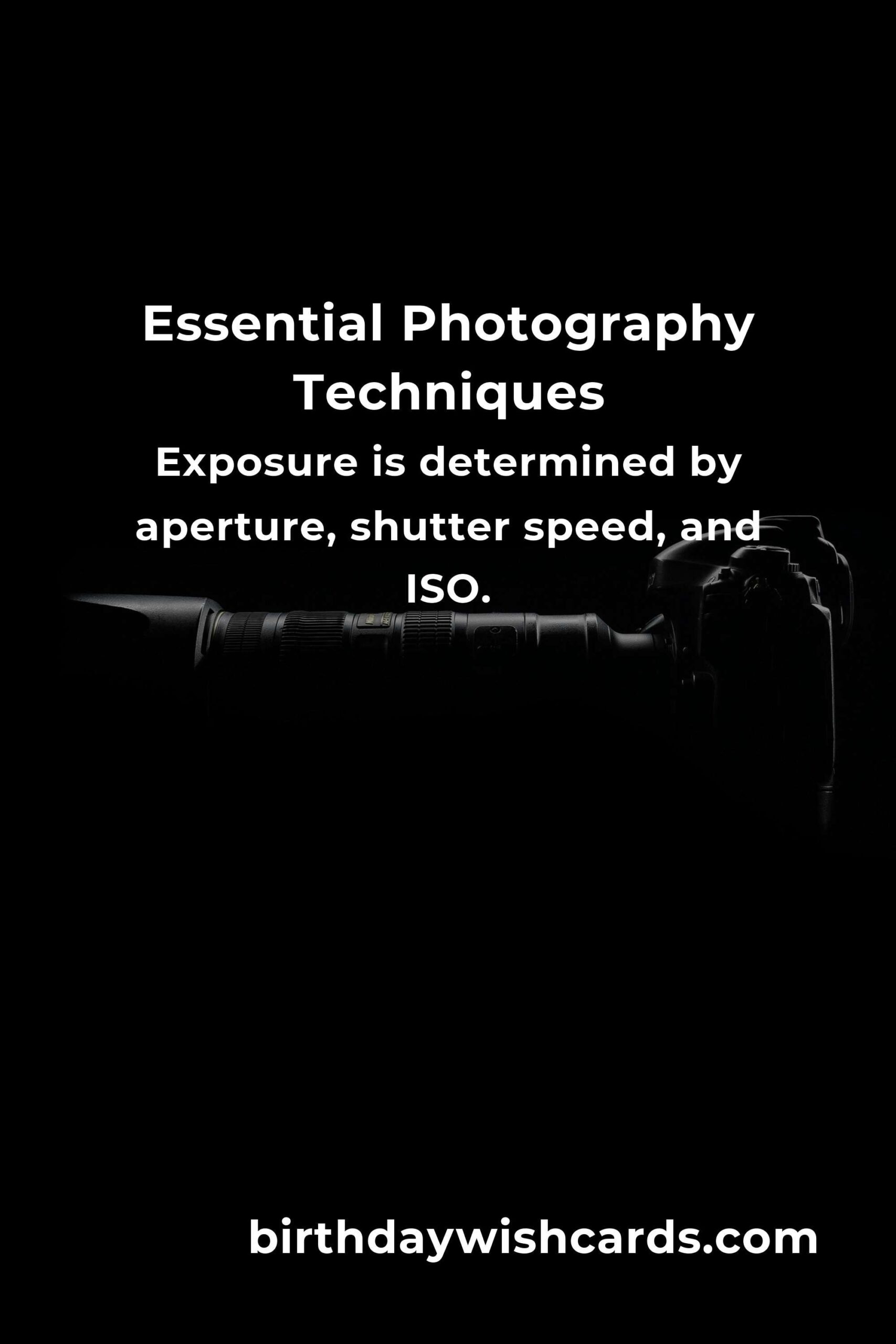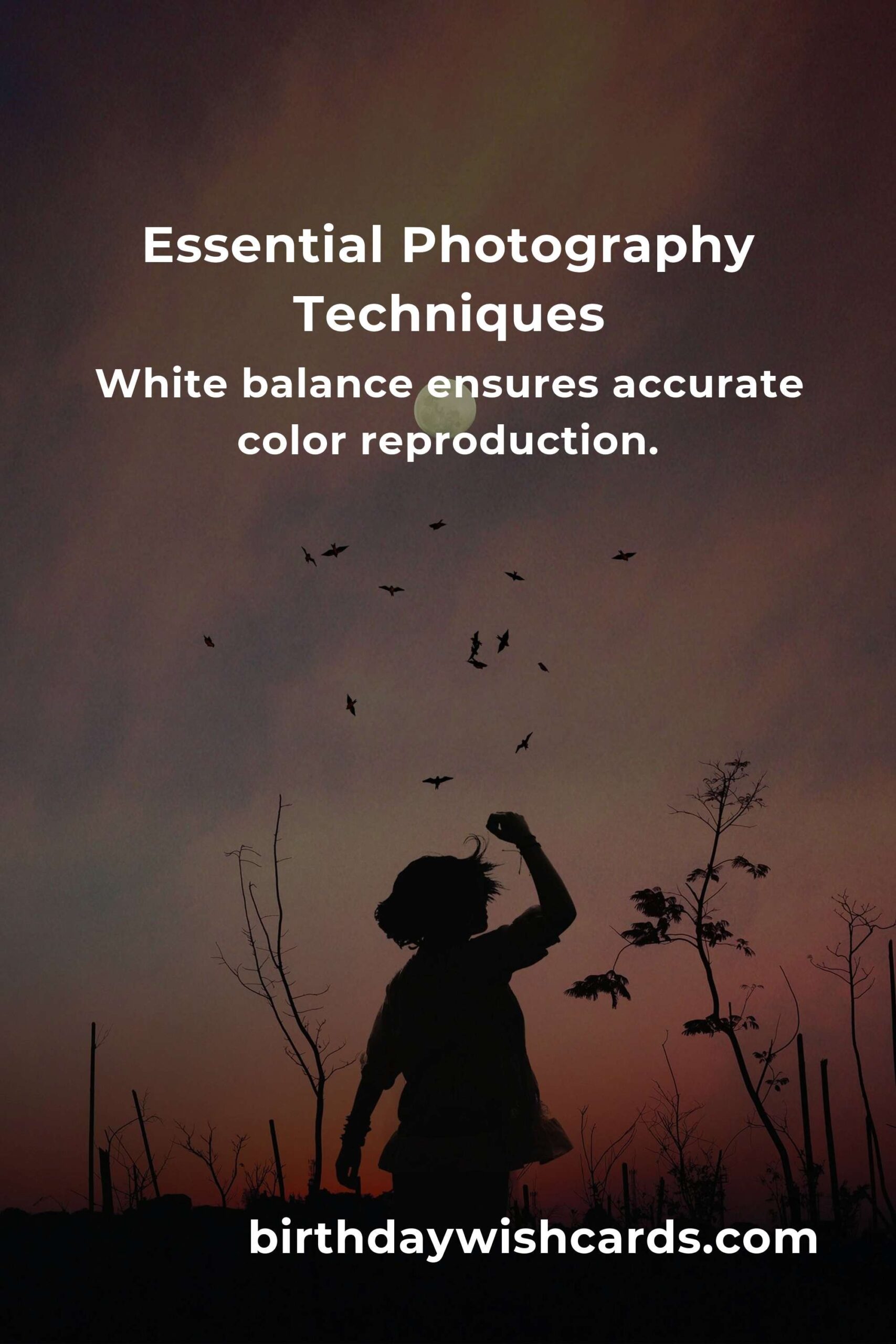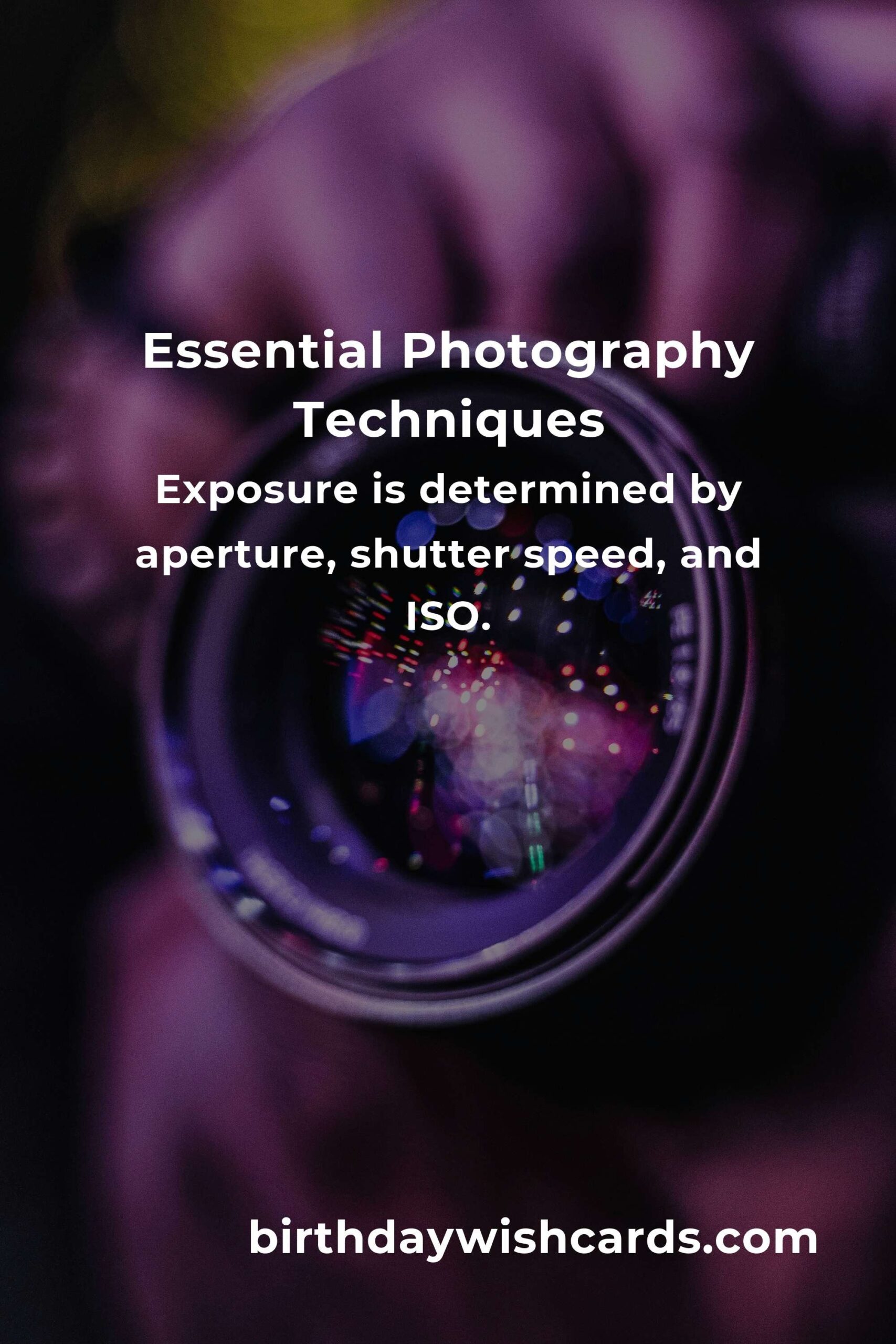
Photography is both an art and a science, blending creativity with technical skills. For beginners, understanding the basics is crucial to capturing compelling images. This guide will demystify some fundamental concepts that can transform your photography experience.
Understanding Exposure
Exposure is the cornerstone of photography, defining how light or dark an image appears. It is determined by three main settings: aperture, shutter speed, and ISO. Mastering these settings will allow you to control the exposure effectively.
Aperture
Aperture refers to the opening in a lens through which light enters the camera. Measured in f-stops, a smaller f-stop means a larger aperture, allowing more light to hit the sensor. Aperture also affects the depth of field, influencing how much of the image is in focus.
Shutter Speed
Shutter speed controls the duration the camera’s shutter is open to let light in. It is measured in fractions of a second. Faster shutter speeds can freeze action, while slower speeds can create motion blur, adding a sense of dynamism to your photos.
ISO
ISO determines the camera sensor’s sensitivity to light. A lower ISO is ideal for bright conditions, while a higher ISO is suitable for low-light environments. However, increasing the ISO can introduce noise, reducing image quality.
The Rule of Thirds
The rule of thirds is a compositional guideline that suggests dividing an image into nine equal segments using two horizontal and two vertical lines. Placing the subject along these lines or at their intersections can create a more balanced and engaging photo.
White Balance
White balance is the process of removing unrealistic color casts so that objects that appear white in person are rendered white in your photo. Different lighting conditions can affect the color temperature of your images. Adjusting the white balance ensures accurate color reproduction.
Importance of Lighting
Lighting is critical in photography as it can dramatically alter the mood and tone of an image. Natural light is often preferred for its softness and warmth. Learning how to use light effectively can elevate your photography to new heights.
Focus and Sharpness
Achieving sharp focus is essential for creating clear images. Autofocus systems in modern cameras are incredibly advanced, but understanding how to manually focus can be beneficial, especially in challenging conditions.
Conclusion
By mastering these fundamental concepts, beginners can enhance their photography skills significantly. Experimenting with exposure, composition, and lighting will allow you to capture images that truly reflect your vision and creativity.
Photography blends creativity with technical skills. Exposure is determined by aperture, shutter speed, and ISO. The rule of thirds enhances image composition. White balance ensures accurate color reproduction. Lighting is critical for altering mood and tone in photography.
#Photography #CameraBasics #PhotographyTips #Exposure #Lighting












